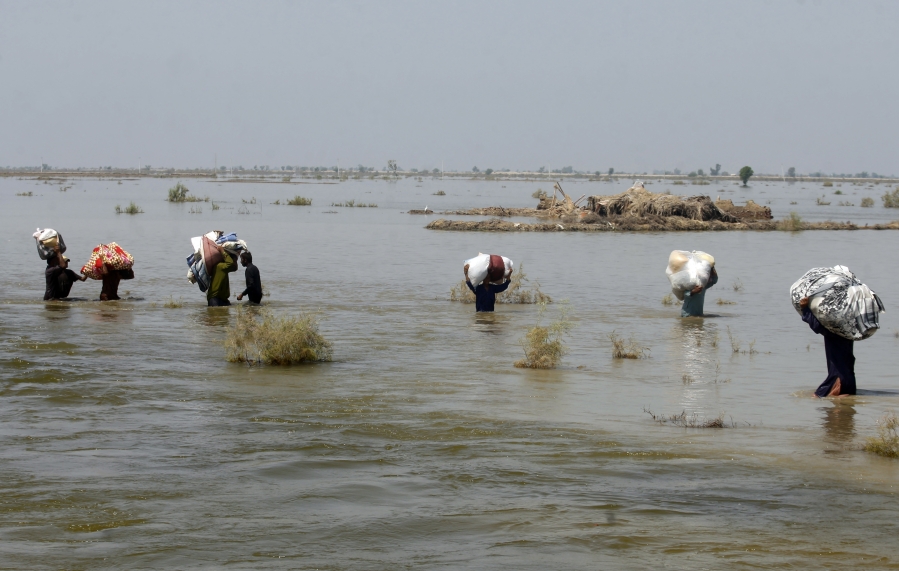Far more people are in harm’s way as they move into high flood zones across the globe, adding to an increase in watery disasters from climate change, a new study said.
Since 1985, the number of the world’s settlements in the riskiest flood zones has increased 122 percent, compared to 80 percent for the safest areas, according to a study in Wednesday’s journal Nature by researchers at The World Bank. The authors looked at settlement extent and expansion using satellites instead of population, with the world’s built-up regions growing 85 percent overall from 1985 to 2015.
“People are on a search for better lives and better jobs and then sort of get stuck in bad lands because that’s what they can afford,” said study co-author Stephane Hallegatte, a World Bank senior climate adviser and expert on disaster economics. He said they know it’s dangerous when they arrive.
The problem is driven by middle- and low-income countries, the study found. Richer countries like the United States and parts of Europe are seeing more growth in safer areas than flood-prone ones and the poorest nations haven’t quite developed as heavily in flood-prone areas, it said.
China and Vietnam both saw their settlement extent more than tripling in the past 30 years, increasing far more than their dry land areas. Most countries, especially in East Asia, saw more settlements in regular flood zones and ultra high flood zones than in dry areas. Libya, which suffered from devastating flooding last month, had an 83 percent increase in settlement extent in the worst flood zones. Pakistan, also the victim of catastrophic flooding both last year and this year, had an 89 percent increase.
What’s happening is that as a nation grows a bit wealthier there’s a change from rural to urban and people leave the country to go to cities, which are often near waterways that flood in places, said study lead author Jun Rentschler, a World Bank economist.
“What we’re trying to do with the study is to track the process of urban development over time,” Rentschler said. “What you would expect is that initially you settle in a safe space, but as the city expands, it’s more likely to grow into areas that it previously avoided, flood zones for instance.”
Then comes the issue of is it cheaper to fortify these dangerous areas or better to move people out, the study authors said.
Dar Es Salaam, Tanzania, is a poster city for this problem, they said. It boomed from a fishing village of about 83,000 people in 1950 to more than 7 million people now, according to World Population Review.
On the other hand, the United States saw dry settlements increase 76 percent and the highest flood settlements go up only 46 percent. Other countries with more dry settlements than ultra-wet include France, Sweden, Austria, Finland, Japan, Canada and India.
“It is an important paper that compiles data on both developed areas and assets exposed to flooding as never has been done before,” said Columbia University climate scientist Klaus Jacob, who wasn’t part of the research. “Especially the data on differentiating the countries by income levels is of importance and provides interesting socioeconomic insights.”



